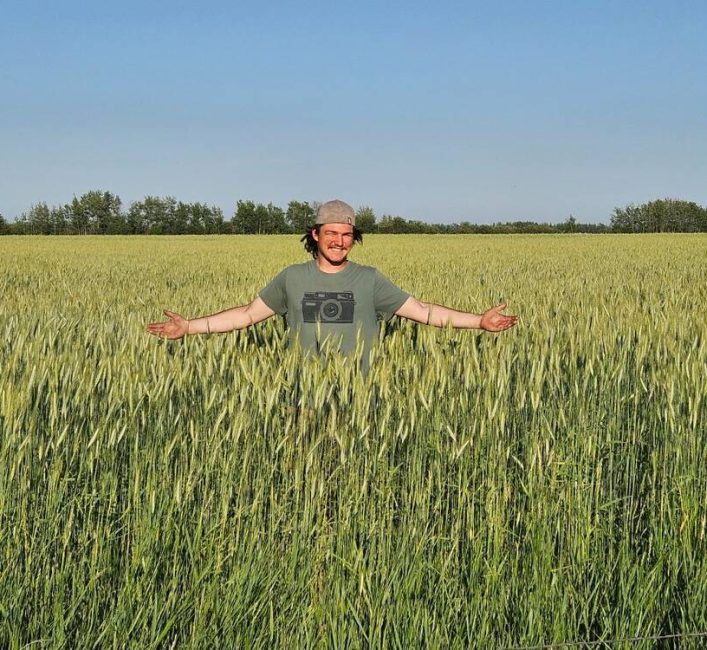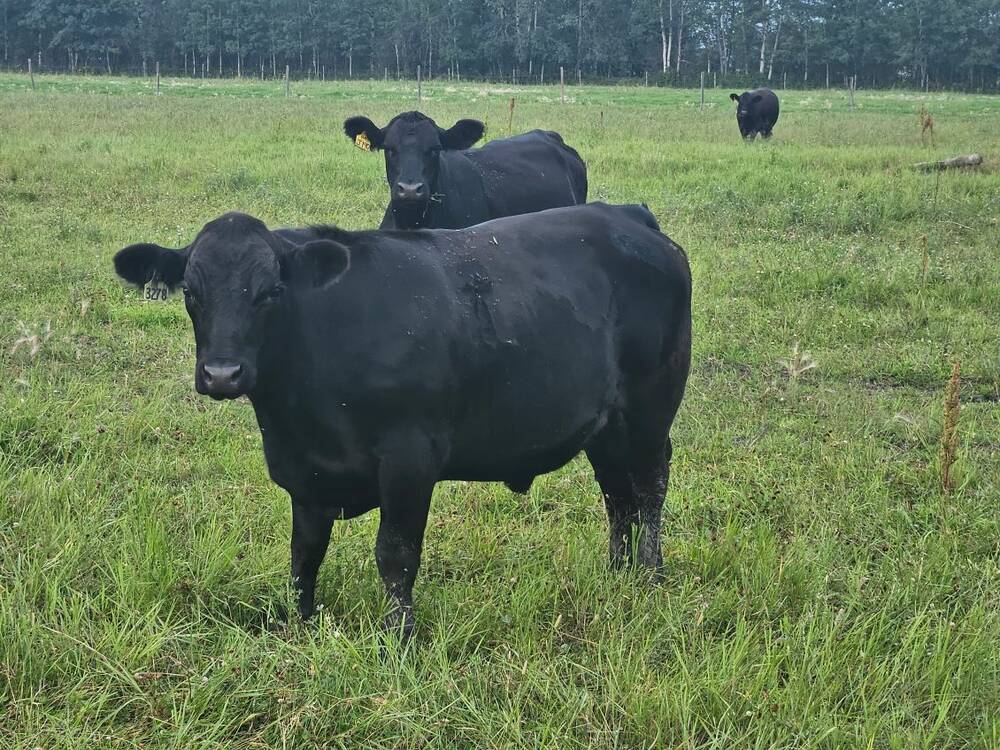Michael Strebchuk, a Peace Country organic farmer, had always had cattle on his operation. It was only after he got rid of his cattle for four years that he really appreciated the improvements cattle brought to the soil. PHOTO: SUBMITTED
Michael Strebchuk says cover crops are working on his farm in the Peace.
“Our challenges have always been how to control weeds and reduce tillage,” he said during an Alberta Organic Producers Association webinar early this winter.
Strebchuk, who is president of the association, farms with his family at High Prairie.
The farm was certified organic in 2008 after his wife suggested they should capitalize on the practices they were already doing on the farm. His father, who farmed the land in the 1970s, had stopped using all forms of herbicide and fertilizer.
Peace Country Beef and Forage Association also kickstarted his doing things differently.
“We had a field on our home quarter that we bought in 2001, that had been overgrazed by a herd of 300 head of cattle that were on the farm for almost the complete summer. You can imagine what my soil looked like when we bought it. We couldn’t drop a plow in the ground. We were struggling with ways to make it productive. Nothing was working and crops were failing.”
Through his connections with the association, Strebchuk worked with consultants Daryl Chubb and Kevin Elmy in 2019. Elmy developed a cocktail mix that would be used for cover cropping. The field was later taken out of production.
Instead of summerfallowing the field like had been done before, the Strebchuks, who farm with their children, planted 15 species of annuals, including everything from non-GMO corn, phacelia, plantain and vetch, among others.
“All of it was designed so that by the end of the season, frost would terminate it,” he said.
Strebchuk said he stuck a spade in the soil when he went to seed the next crop.
“In just one year, I went from zero aggregate soil to over two inches of aggregated topsoil, which was amazing. I planted my wheat crop that next year into that and worked it up,” he said. “It wasn’t a bumper crop, but it was way more than we had ever had before. And at that point, I was hooked.”

Strebchuk urged his audience to consider every tool in their tool box. His family was a longtime cattle operation, but they got rid of cattle for four years.
“I really learned how valuable cattle are when I got rid of them,” he said.
Volunteer alsike clover grew on the field Strebchuk cover cropped in 2019, and on the home quarter.
In 2020, his farm had a large dump of moisture, and Strebchuk couldn’t get on the land until July.
Because he didn’t spray, 80 acres of alsike clover came up and he produced 2,500 bales of hay.
“Because I didn’t have the expense of seeding, I made the most money on a ratio that year by not seeding,” Strebchuk said.
The cattle grazed those 80 acres on three separate occasions throughout the year, doing two- to three-acre parcels and then moving while the land was allowed to rest. The home quarter was also grazed three times that year.
Both fields were seeded with oats in the spring of 2022.
“When I harvested that year, the 80 acres had 15 bushels an acre more production, more than the home quarter,” he said. “The only difference was how I had managed that clover the year before, and that really sold me on having cows on my field at some way.”
Strebchuk found out about the On Farm Climate Action Fund and used it to acquire a Power Grazer. The tool enabled him to make fences on any field he owns.
Currently, cattle graze all of Strebchuk’s land at some point in the season, or within two years.
He always plants a cover crop.
“As our crop deteriorates, ripens and matures, we still have a living plant growing and feeding the soil,” Strebchuk said.
He began planting a winter triticale or winter wheat at the same time as planting a spring cereal. Fall rye can also work, but it does not grow well in the Peace.
Last year, the family planted wheat and winter triticale at the same time and harvested the wheat.
Strebchuk’s farm is now part of the Living Lab and a research project with the Peace Country Beef and Forage Association.

